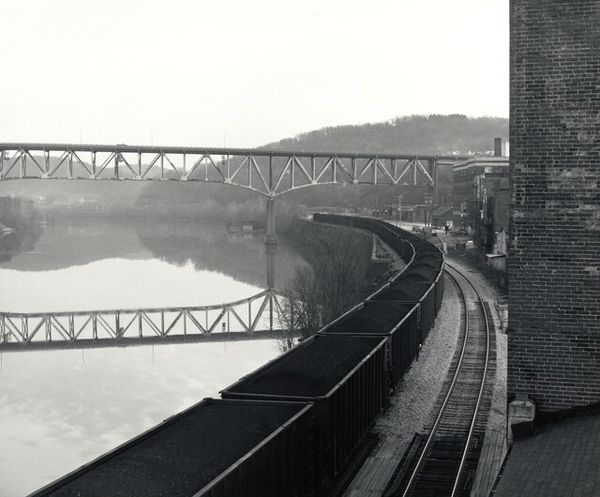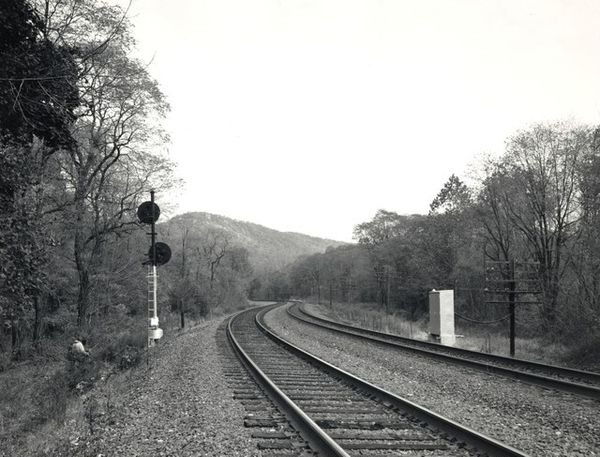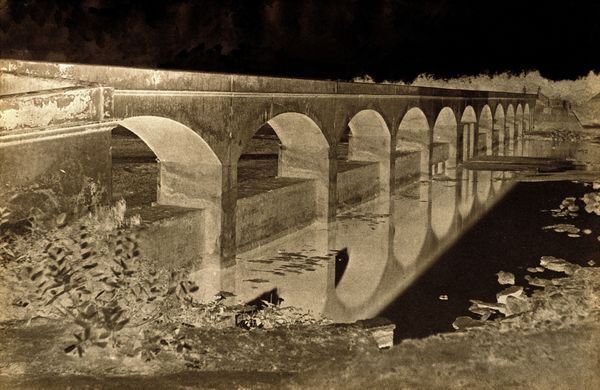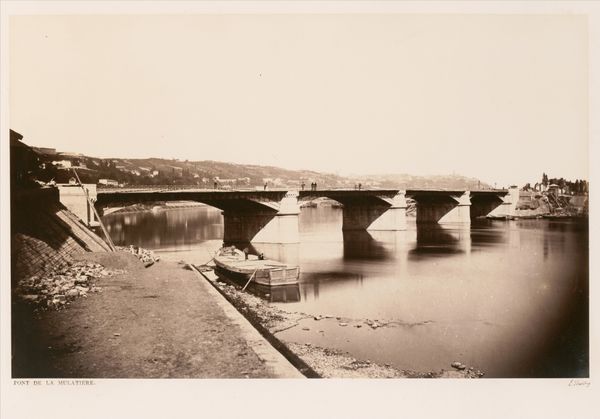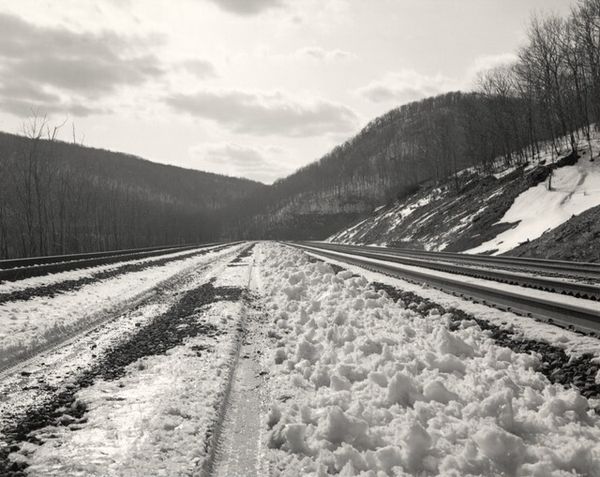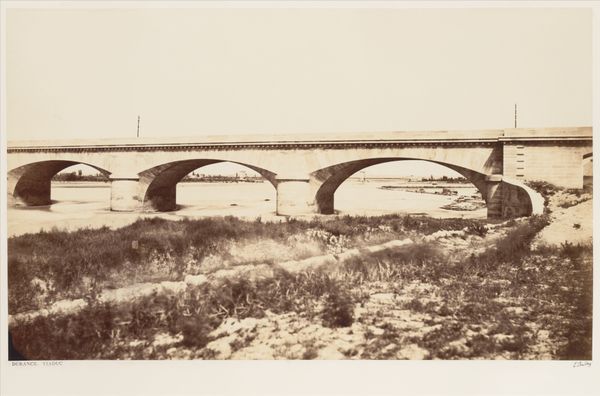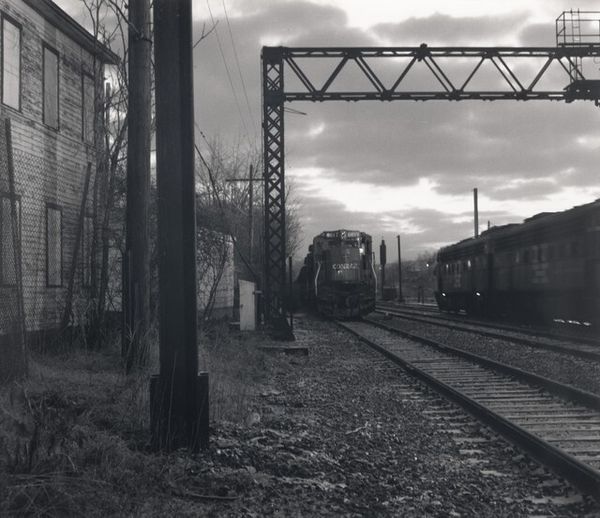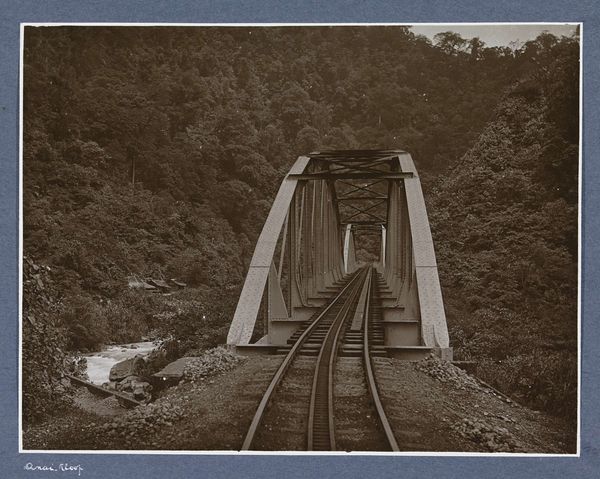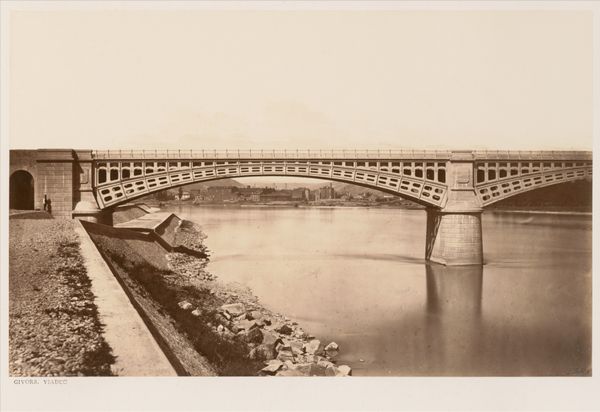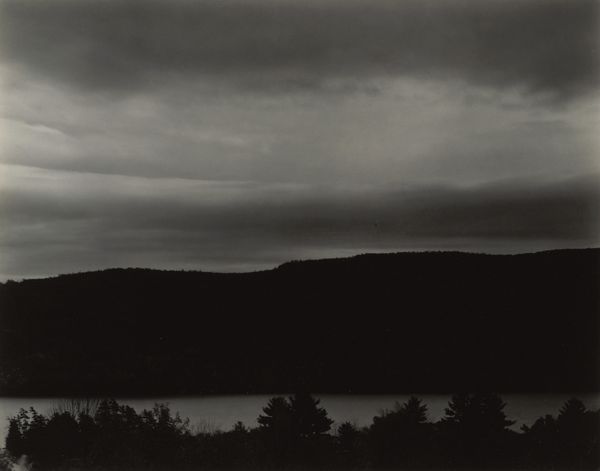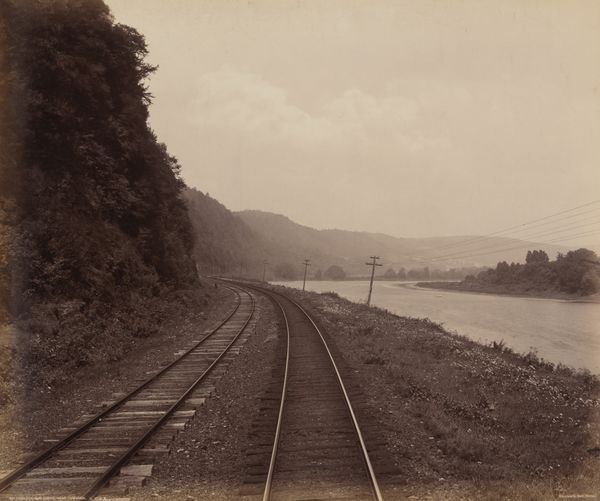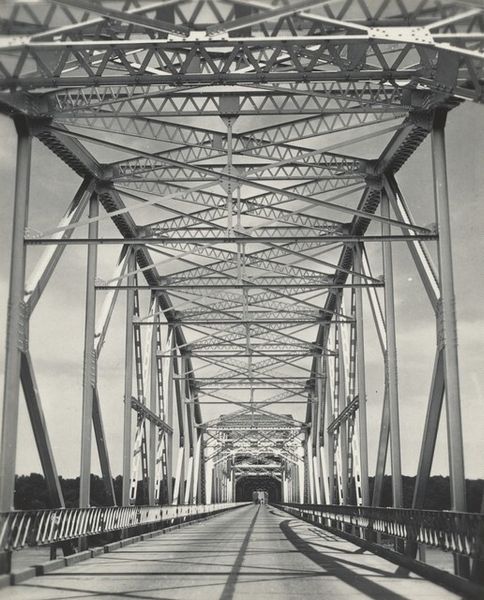
photography
#
black and white photography
#
landscape
#
black and white format
#
photography
#
black and white
#
monochrome photography
#
monochrome
#
statue
#
monochrome
Dimensions: image: 24.1 × 29.5 cm (9 1/2 × 11 5/8 in.) sheet: 27.9 × 35.5 cm (11 × 14 in.)
Copyright: National Gallery of Art: CC0 1.0
Editor: Here we have James Welling's "Rockville Bridge, Harrisburg, Pennsylvania" from 1993, a striking black and white photograph. It’s such a strong image, and I’m immediately struck by how the stark contrast seems to flatten the space, emphasizing the bridge’s imposing structure. What do you see in this piece? Curator: It's more than just a beautiful picture. Consider the bridge itself: infrastructure, inherently linked to labor, to movement, and to power. The bridge isn't just connecting two points physically; it represents connection, trade, and the industrial underpinnings of American society, and the monochrome lens abstracts but also heightens this consideration of social and economic landscape. Think about whose labor built this bridge, whose journeys it facilitated, and who might have been excluded from its benefits. Editor: That’s a compelling reading. I was so focused on the aesthetic quality; the reflections in the water, the train… But you’re right, a bridge is more than just a structure. Curator: Precisely. And the lack of color contributes to this; it allows us to see past surface appearances, pushing us to consider deeper structures of power. Consider too that bridges can be viewed as symbols of colonialism and capitalist expansion, often built at the expense of marginalized communities. Do you see anything in this that you can connect with today’s society? Editor: Absolutely, especially considering infrastructure debates now - who benefits, who is displaced. The train feels like a through line of thinking of these societal components across time. The photograph prompts questions about how we build, and for whom. Curator: Exactly! Art allows us to unearth narratives and complexities, even within something as seemingly straightforward as a bridge. The photographic process is interesting here also. Welling used different filters here I see. We can see this landscape with clarity, through different modes of making and societal engagement. Editor: This has completely shifted my perception. I came in thinking about composition, but now I'm considering socioeconomic implications! Curator: And that's the power of engaging with art critically - looking beyond the surface, considering the interwoven narratives of power, history, and identity that shape our world.
Comments
No comments
Be the first to comment and join the conversation on the ultimate creative platform.

